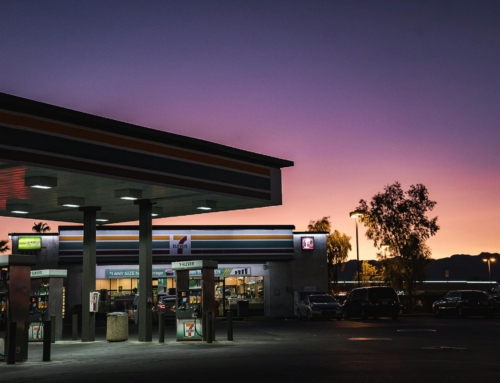GrocWhy Launch a Brand-Owned Reward Program? 4 Reasons.
Take the Shiseido+ Rewards program, operated by the Japanese-owned prestige beauty brand. With markets spanning Asia, Europe and the Americas, this one loyalty platform can gather data on an broad customer base. It can reveal the condition of its members’ skin, even on a daily basis, and it serves a single portal through which the company can communicate with all members.
The best part: Shiseido owns it all. And that is a powerful bargaining chip with retailers. Think: 62% of consumer brands say they do not have a shared-data model.
These benefits are probably why more packaged-goods brands now operate their own loyalty programs. Nearly 75% of consumers are enrolled in at least one such program, according to the 2021 “CPG Loyalty Engage Report” by PrizeLogic and Loyalty360.
Benefits Breakdown – Data, Savings, Packaging, Prestige
Consumers are leaning into the value of branded reward programs because the direct-to-consumer model is so straightforward. It also generates easy-to-spot benefits to the companies operating them. Here those perks are broken into four baskets.
That don’t-miss opportunity to compound data insights. While CPG manufacturers and retailers don’t share customer data as a standard practice, some have been experimenting with it so they can get a better read on customer preferences. A snack food brand that has shared access to its retail partner’s databases can analyze the baskets and demographics of its purchasers to shape its marketing, promotions and product development. The Kellogg’s Family Rewards site, for example, reflects the preferences of the entire family that likely are supported by in-store behaviors, with playful online activities and interactions, including access coupons.
A loyalty program can help reduce advertising costs. Consumer brands have traditionally counted on third-party data for their digital advertising, but with the clock ticking on Google’s use of third-party online cookies (ad-tracking tools), this models’ days are numbered. The data derived from a rewards program – when deployed effectively – can contribute to more productive consumer campaigns. Plus, the brand owns the insights garnered from the resulting purchases and can roll them right back into future offers, enhancing the lifetime value of its members.
The package can be the reward “card.” A brand’s smart packaging can serve as the portal to its rewards program. A QR code can, for example, link members to a website that provides enrollment, product details, use suggestions and reward incentives. And get this: The number of QR interactions among consumers rose by 94% from 2018 to 2020 (most recent year). Thus, smart QR codes encourage more consumer face time. Take the brand Pampers; it encourages members of the Pampers Club to scan package codes so they can earn points and incentives. Hershey’s, meanwhile, has included QR codes on its Kisses packaging to promote ingredient transparency, and trust.
CPG rewards can inspire prestige purchases. A brand can use its rewards platform to more directly inspire customers to buy different products in its line, and that includes higher-priced goods. Getting back to the cosmetic brand Shiseido – it offers two tiers in its Shiseido+ Rewards program. Members who accumulate 2,000 points in a one-year period (by spending $2,000) get access to the Shiseido+ Camellia tier, which includes a free mystery birthday gift, two customized makeovers and 50% higher earnings power.
And Now, the Warnings
Yeah, no marketing venture is safe from an occasional ding or dent. Just as a bottle of detergent accidentally splits open because you let it sit on a hot dryer (whoops), a program operator might fall for common practices that just don’t suit a consumer brand loyalty concept. Take note of these missteps:
- Don’t be two-faced: The face of the brand, including its packaging, advertising, and slogans, should extend fully to the face of the rewards program. PepsiCo Tasty Rewards, for example, welcomes would-be members with brightly colored images of its products, a quick how-to video, recipes, party-planning tips and links to sweepstakes and coupons. Oreo’s reward points page, however, includes a single image of an Oreo (sans milk!) – a missed opportunity considering the many Oreo flavors and childhood memories.
- Don’t target the same old customer base. Regardless of how a brand’s target customer base is defined demographically, the program should cast a slightly wider net when targeting reward members. It shouldn’t ignore the revelations: An app-based program can capture the interest of untraditionally younger or more affluent members than its core base, for example, just as long as the offerings are relevant to them.
- Don’t treat the data like a by-product. Many loyalty program operators find themselves in the common conundrum of not optimizing the data they gather, largely because they don’t know what to do with it all. The potential disconnect with members can be severe. Program operators should decide in the planning stages what they want the program to accomplish, and then what data is necessary to accomplishing that. Then, focus only on collecting that data – efficiently. If necessary, hire an expert.
- Don’t ignore partnerships. Often, unlikely bedfellows are the most compatible for a rewards model. Think about it – wouldn’t it be helpful to know how your customers shop with your leading competitors? However, keep in mind a competitor can simply be another brand experience vying for the customer’s discretionary dollar, and therefore not in the same category. Think Coca-Cola and rum; AMC movies and
Don’t Box Yourself In!
CPG companies are innovators; tirelessly finding new ways to satisfy the consumer’s most demanding needs. And the really good CPG companies come up with goods that meet needs their customers didn’t know they had (thank you, Swiffer).
Consumers might not think they need reward programs for buying chips and mascara, until they see that a membership will make their everyday lives more exciting. If R&D can figure out a way to make cauliflower exciting, then I think they can clear that hurdle.
Let Incendio help you launch a rewards program with loyalty initiatives and avoid common missteps. Contact us today at Info@IncendioWorks.com.
This article originally appeared in CPG Matters.










Leave A Comment